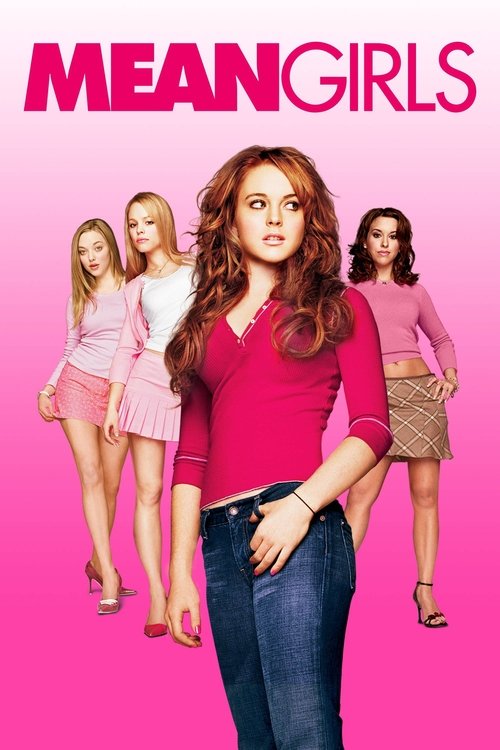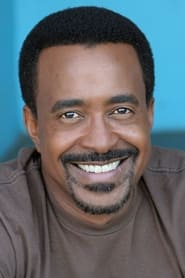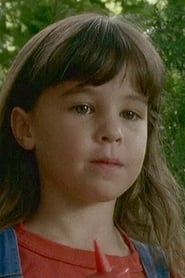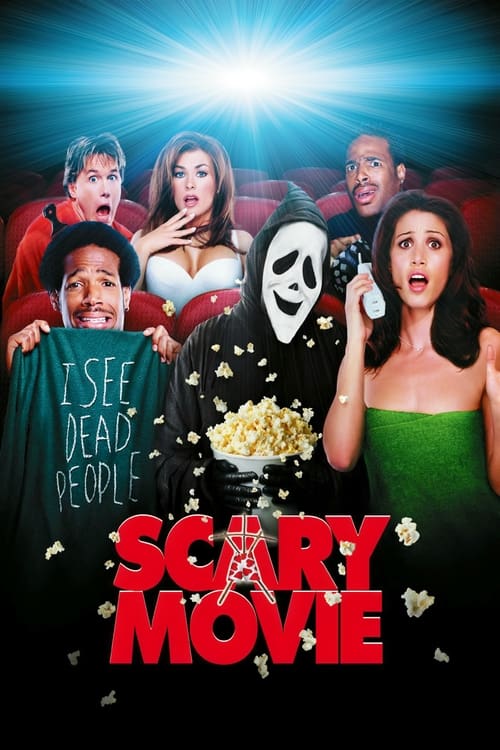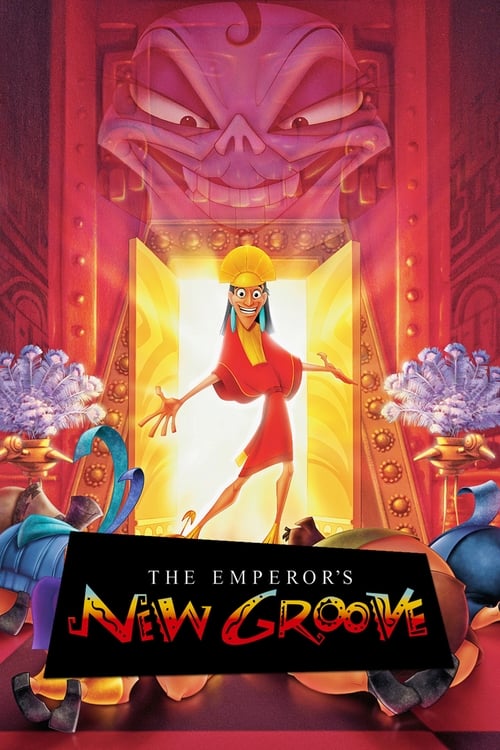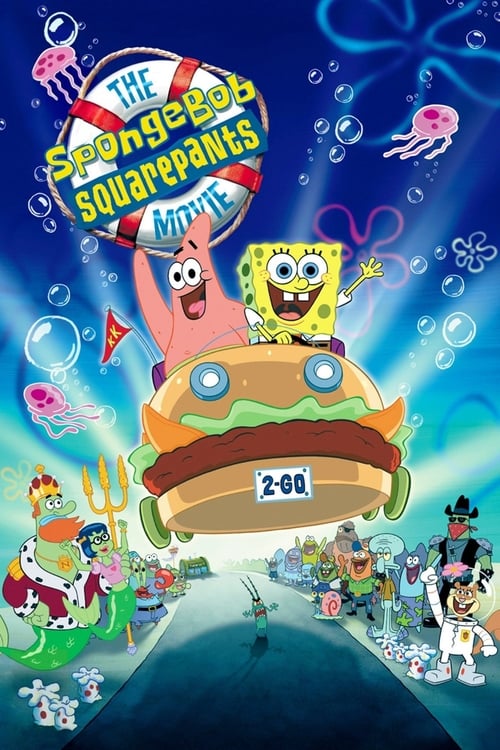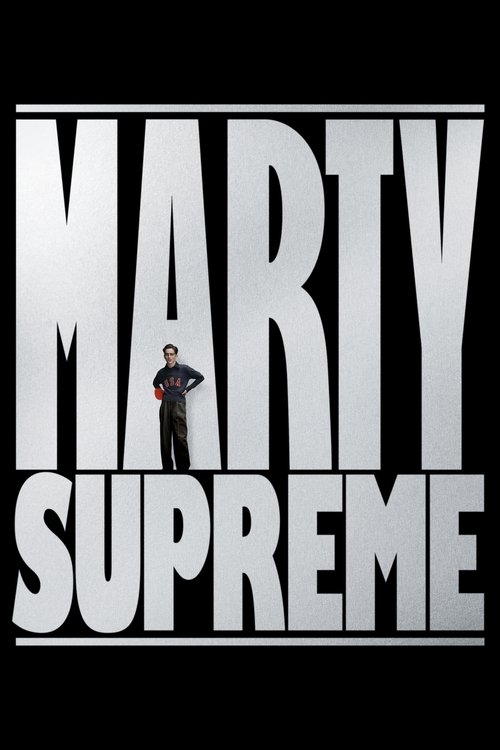
Ask Your Own Question
What is the plot?
As the sun rises over the affluent suburb of Evanston, Illinois, 16-year-old Cady Heron nervously steps into the unfamiliar world of North Shore High School. After being homeschooled by her zoologist parents in Africa for twelve years, Cady is about to experience the complexities of American high school life firsthand. It's early September, the start of a new academic year, and Cady is eager to make friends and fit in.
Upon entering the school, Cady is immediately struck by the stark contrast between her former life and this new environment. The teachers seem dismissive, and the social hierarchy is daunting. However, her day takes a turn for the better when she meets Janis Ian and Damian Leigh, two outcasts who quickly become her guides through the intricate social landscape of North Shore High.
Janis, a goth outcast with a sharp wit, and Damian, her gay best friend, introduce Cady to the school's various cliques. They warn her about the "Plastics," a trio of influential and mean girls led by Regina George, with Gretchen Wieners and Karen Smith as her loyal followers. Regina is the epitome of popularity, beauty, and manipulation, and her influence is felt throughout the school.
As Cady navigates her new surroundings, she catches the eye of Aaron Samuels, a popular boy who happens to be Regina's ex-boyfriend. Despite Janis's warnings about Regina's manipulative nature, Cady finds herself drawn to the Plastics. Regina, Gretchen, and Karen unexpectedly invite Cady to join their clique, and she soon becomes an integral part of their group.
Cady's integration into the Plastics is swift and transformative. She adopts their mannerisms, becomes obsessed with her appearance, and starts to manipulate others to maintain her social standing. Janis and Damian initially encourage Cady to gather intel on the Plastics, hoping to use it to bring Regina down. However, as Cady becomes more entrenched in the group, she begins to lose her original identity and becomes as manipulative as Regina.
The turning point comes when Regina kisses Aaron at a Halloween party, betraying Cady's trust. This incident sparks Cady's full commitment to Janis's plan to sabotage Regina. Cady orchestrates a series of "accidents" designed to humiliate Regina, including feeding her high-calorie bars under the guise of weight loss and spreading rumors about her.
Meanwhile, Janis harbors a long-standing grudge against Regina, who had excluded her from a birthday party and called her a lesbian. Janis sees this as the perfect opportunity to exact revenge and destroy Regina's reputation.
As Cady's actions become more aggressive, she starts to alienate her friends Janis and Damian. They confront her about her transformation into a "mean girl," accusing her of becoming as manipulative and image-obsessed as Regina. Cady realizes too late that she has lost herself in the process.
Regina, however, is not one to be underestimated. She discovers Cady's sabotage and decides to retaliate by distributing the contents of the Burn Book--a scrapbook filled with vicious rumors and insults about nearly everyone in school--throughout the school. To avoid suspicion, Regina inserts fake insults about herself, framing Cady, Gretchen, and Karen for the chaos that ensues.
The Burn Book's exposure causes widespread chaos, with fights breaking out and social hierarchies crumbling. Principal Duvall and math teacher Ms. Norbury intervene, gathering the female junior students in the gym for a group apology session. Ms. Norbury, who was also slandered in the Burn Book, encourages the girls to confess their wrongdoings and apologize to each other.
During the session, Janis reveals her and Cady's entire plan to destroy Regina's reputation. Regina, enraged and humiliated, insults Janis's sexuality, prompting Janis to proudly declare her involvement in the scheme. The revelation leads to a heated argument between Cady and Regina.
In a dramatic turn of events, Regina storms out of the gym, pursued by an apologetic Cady. As they exit the school, Regina is struck by a school bus, fracturing her spine but surviving the accident. The incident serves as a stark reminder of the consequences of their actions.
In the aftermath, Cady reflects on her transformation and the harm she has caused. She begins to reconcile with Janis and Damian, returning to her authentic self. The film concludes with Cady tutoring Aaron, symbolizing a new beginning for her. The girls participate in the Spring Fling dance, marking a moment of unity and growth. The Plastics' power is diminished, and a new era of cooperation and understanding begins at North Shore High.
As the students dance together, the once-dominant social hierarchy begins to dissolve, replaced by a sense of camaraderie and mutual respect. Cady, having learned from her mistakes, emerges as a stronger and wiser individual, ready to face the challenges of high school with a newfound sense of purpose and identity. The film ends on a hopeful note, suggesting that even in the most challenging environments, change and redemption are possible.
What is the ending?
At the end of Mean Girls, Cady Heron realizes the negative impact of her actions and seeks to make amends with her friends. After a chaotic confrontation at the Spring Fling dance, she wins the crown but ultimately decides to give it to Regina George, symbolizing her rejection of the toxic behavior she had adopted. The film concludes with Cady finding a balance in her friendships and embracing her true self.
In a more detailed narrative, the climax of Mean Girls unfolds at the Spring Fling dance, where tensions reach a boiling point. Cady Heron, having been deeply influenced by the Plastics, finds herself at a crossroads. The night begins with a sense of excitement and anticipation as students arrive at the decorated gym, filled with colorful lights and a festive atmosphere. Cady, dressed in a beautiful pink gown, is both nervous and exhilarated, aware that this event is pivotal in her high school experience.
As the dance progresses, Cady's internal conflict becomes evident. She has been caught in a web of deceit and manipulation, particularly with Regina George, the queen bee of the Plastics. Regina, feeling threatened by Cady's growing popularity, has been plotting to sabotage her. The tension escalates when Regina confronts Cady, leading to a public showdown that reveals the true nature of their friendship. The atmosphere shifts from celebratory to hostile, as the other students watch the drama unfold.
In a moment of clarity, Cady realizes that the crown she has been vying for represents the very toxicity she has been trying to escape. When she is announced as the Spring Fling Queen, the cheers of her classmates echo around her, but instead of basking in the glory, she feels a wave of guilt wash over her. In a bold move, she takes the crown and walks over to Regina, who is still reeling from the confrontation. Cady hands Regina the crown, a gesture that signifies her rejection of the mean-spirited competition that has defined their relationship.
This act of defiance is not just about the crown; it symbolizes Cady's growth and her desire to break free from the cycle of bullying and manipulation. The crowd is stunned into silence, and then a wave of applause erupts, as students begin to recognize the importance of kindness and authenticity over superficial popularity.
As the dance comes to a close, the aftermath of the confrontation leads to a shift in the social dynamics at the school. Regina, having lost her grip on the Plastics, faces the consequences of her actions. She is seen being hit by a bus, a dramatic turn that serves as a metaphor for her downfall. Meanwhile, Cady begins to rebuild her friendships, reconnecting with her original friends, Janice and Damian, who have stood by her throughout her journey.
In the final scenes, we see Cady embracing her true self, surrounded by a diverse group of friends. The film concludes with a montage that highlights the changes in the characters. Janice and Damian are seen thriving in their own identities, while the Plastics have disbanded, each girl finding her own path. Cady reflects on her experiences, acknowledging the lessons learned about friendship, honesty, and the importance of being true to oneself.
The ending of Mean Girls encapsulates the film's central themes of self-discovery and the consequences of social hierarchies, leaving the audience with a sense of hope and the understanding that kindness can prevail over cruelty.
Is there a post-credit scene?
In the movie "Mean Girls," produced in 2004, there is no post-credit scene. The film concludes with a final scene where Cady Heron, played by Lindsay Lohan, reflects on her experiences and the lessons she has learned about friendship and self-acceptance. The credits roll without any additional scenes or content after them. The focus remains on the resolution of the main storyline, emphasizing the growth of Cady and her relationships with her peers.
What are the rules of the Plastics?
The Plastics, led by Regina George, have a set of strict rules that govern their social interactions and behavior. These rules include things like not wearing sweatpants on Mondays, only wearing certain colors on specific days, and maintaining a certain image to fit in with their elite social group. These rules are a reflection of their superficial values and the pressure to conform.
How does Cady Heron first meet the Plastics?
Cady Heron first meets the Plastics during lunch at North Shore High School. She is initially sitting with Janice and Damian, who explain the social hierarchy of the school. When Regina, Gretchen, and Karen approach their table, Cady is both intrigued and intimidated. Regina invites her to sit with them, marking the beginning of Cady's transformation and her entry into the world of the Plastics.
What is the significance of the Burn Book?
The Burn Book is a scrapbook created by the Plastics that contains hurtful comments and rumors about their classmates. It serves as a weapon for Regina George to maintain control and power over her peers. The book's existence highlights the toxic nature of high school social dynamics and ultimately leads to chaos when it is discovered, causing rifts among the students and revealing the true nature of the Plastics.
How does Cady's relationship with Aaron Samuels develop?
Cady's relationship with Aaron Samuels begins when she has a crush on him, which is complicated by her friendship with Regina, who is also interested in him. Initially, Cady tries to navigate her feelings while maintaining her loyalty to Regina. As the story progresses, Cady and Aaron grow closer, especially after Cady starts to distance herself from the Plastics. Their relationship becomes a central emotional arc, showcasing Cady's internal conflict between her desire for acceptance and her true self.
What happens during the Spring Fling dance?
During the Spring Fling dance, tensions reach a peak as Cady, now fully immersed in the Plastics' world, decides to sabotage Regina by wearing a dress that Regina had previously deemed 'the best.' Cady's plan backfires when Regina exposes her true intentions, leading to a public confrontation. The dance becomes a pivotal moment where Cady realizes the consequences of her actions, and it ultimately leads to her reconciliation with Janice and Damian, as well as her acceptance of her own identity.
Is this family friendly?
"Mean Girls," produced in 2004, is a teen comedy that explores themes of friendship, bullying, and the complexities of high school social dynamics. While it has humorous moments, there are several potentially objectionable or upsetting aspects that may not be suitable for younger audiences or sensitive viewers:
-
Bullying and Social Exclusion: The film prominently features bullying, both verbal and emotional, as characters navigate the harsh social hierarchy of high school. This includes scenes where characters are ostracized or humiliated.
-
Inappropriate Language: There are instances of strong language and derogatory terms used among characters, which may not be suitable for children.
-
Sexual References: The film includes discussions and jokes about teenage sexuality, relationships, and promiscuity, which may be uncomfortable for younger viewers.
-
Body Image Issues: Characters often discuss and critique each other's appearances, leading to themes of body shaming and self-esteem struggles.
-
Manipulative Behavior: The main characters engage in deceitful and manipulative tactics to gain social power, which may send mixed messages about friendship and loyalty.
-
Conflict and Emotional Turmoil: The film portrays intense emotional conflicts, including jealousy, betrayal, and the impact of social pressure, which could be distressing for some viewers.
These elements contribute to the film's overall message about the importance of kindness and authenticity, but they may be challenging for children or sensitive individuals to process.

